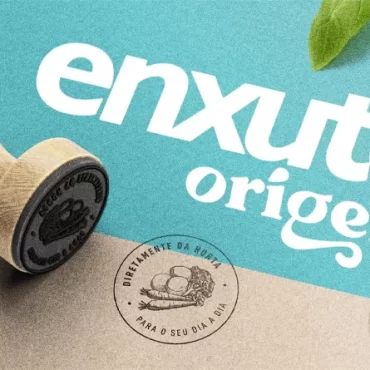Gamification: learn how this technique can optimize your brand

Get inspired
Every project is made by a series of creative processes that easily engage teams, and others that require a little more attention. But what if these more boring activities could bring as much satisfaction to people as a game match? This is the bet of gamification to develop increasingly effective and innovative solutions, especially in the digital universe.
What is gamification?
Basically, it is a technique that companies apply, in their real life experiences, practices that are used by the games industry, one of the first to develop projects focused on people. That’s because the main role of the game designer is to entertain participants, understanding what keeps them motivated. Thus, while many brand solutions are designed to increase efficiency – design focused on functions – gamification puts users’ motivations at the center of the process.
For this, designers insert elements, such as scoreboards, goals, organization of tasks in levels and small prizes, in a product that is not in this context. The goal is to gain user engagement to strengthen the brand, solve internal challenges or promote the launch of new products. After all, who doesn’t have a little bit of competitiveness or feel good fulfilling their daily tasks?
But how does this process work?
Brands have successfully applied these practices. This is because they are based on several principles that allow us to understand the behavior of users, predict their responses and, consequently, create products that meet their expectations. According to the gamification expert Yu-Kai Chou, these principles are guided by 8 main motivations – known as Core Drivers -, which are common to all people and were brought together by him in a model called “Octalysis Structure”.

To better understand how these principles are applied in creating gamified solutions, let’s use the example of the Headspace meditation application. Following the structure of Yu-Kai Chou to the letter, the designers created a very friendly platform, making it one of the most accessed in the world. In this case, the principles of the Octalysis Framework work as follows:
- Search for purpose: “I want to feel happier and manage my flow of thoughts”.
- I want to achieve something: “With just a few minutes, I complete my meditation and complete a task of today”
- Feel safe to express your creativity and receive feedback: “How can I make today’s meditation more interesting? ”.
- Search for social influence and connection: “Wow. I managed to do my meditation today, I will share my result on Stories! ”.
- Ownership: “I can create a personalized meditation schedule according to my needs”.
- Avoid negative consequences: “I managed to keep the habit of meditating for 15 days straight. I can’t miss it today! ”.
- Unpredictability: “Wow. New meditations available, let’s explore them ”.
- Shortages: “These special meditations have a special price. I think it’s worth a try ”.
With the help of very nice animations, Headspace works with a small timeline, so the meditations made by the user and the videos watched by him determine the stories he will find inside the platform. Thus, the user has a sense of control and autonomy over his own journey.

And how can gamification be applied to your business?
To get an idea of the importance of gamification for brands, it is today one of the biggest trends in the development of learning platforms. A survey by eCom Scotland found that more than 30% of companies in the segment have used this strategy in their courses, 12% are developing tests and 53% expect to use game mechanics in their solutions in the next two years.
Who remembered Duolingo? With medals, its own currency (the “lingots”) and leaderboards that connect the scores obtained by the user and his network of friends, the application has become a great solution for learning new languages.
In the corporate environment, gamification can be applied in training and meetings, divided into stages with goals and small prizes. Thus, managers gain more tools to monitor the progress of the team, make the objectives of the tasks clearer and gain the engagement of employees to make innovative solutions.
Google, for example, created a game of travel expenses to create motivation among its employees. On the platform, users are able to track their spending and the amount saved by them is “returned”, added to the next salary. In addition, employees can choose to donate this amount to charities.
This shows that gamification can be applied in different ways to solve the most different challenges according to the needs and context of each brand. The essential thing is to trigger the motivation of the participants. To help you develop an effective strategy, we’ve prepared some important tips:
# Know your audience
To obtain good results with gamification, companies need to pay attention to the real needs and interests of their audience, trying to understand their context, their psychological reasons and the challenges to be solved.
# Define objectives
Any gamification strategy begins with the definition of objectives and goals, in line with the business purpose. Try to understand which results you intend to achieve at the end of the process and, from there, define what it means to “win the game”.
# Create a narrative
A consistent narrative is essential to captivate participants in the dynamics. It allows connections between past experiences, achievements in the present and ambitions for the future. With analogies, you help to fix content and create the mechanics that will guide your “players” through different levels. Avatars, badges, missions and universes with their own rules are great resources for immersing participants.
# Propose mechanics and rules
A good game needs regulations that define the gradual progress of the participants. You can propose a points system, create different levels, set up individual challenges and award prizes, for example. The possibilities are many, so try to understand what works best for your business context.
# Measure results
A gamification strategy needs resources to measure the performance of the participants. The use of applications and other digital platforms helps to monitor indicators more easily, but it is also possible to do this through resources such as scores, opinion polls and feedback.
Did you see how gamification can make any challenge more fun, boost innovation and make it easier to measure results? So, to optimize your business, try to understand the needs of your audience and your brand well and, from that, define what are the ideal resources for your gamified solution. Thus, you can, in partnership with a designer, create immersive narratives and practical dynamics, capable of gaining user engagement with differentiated experiences.



